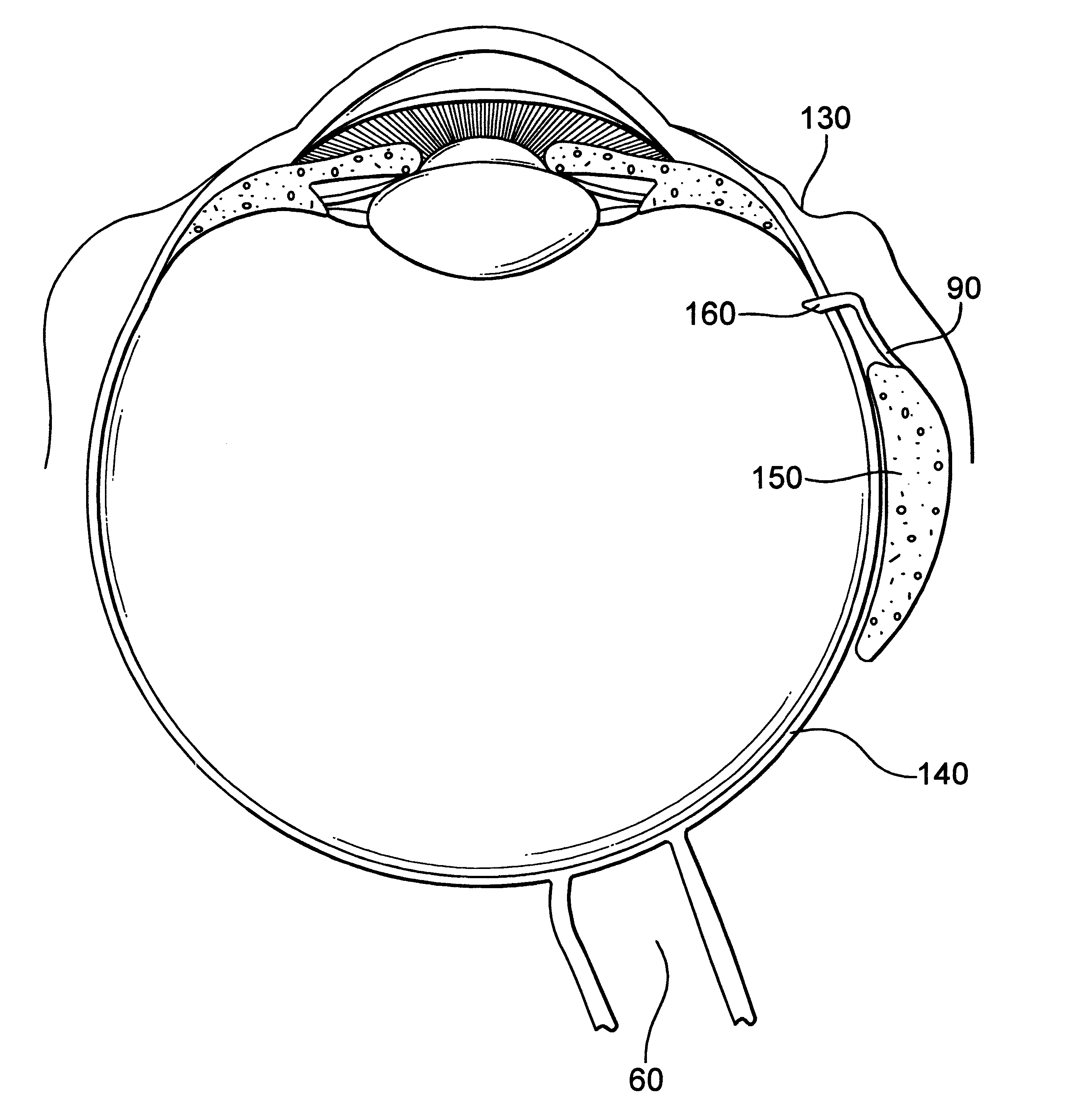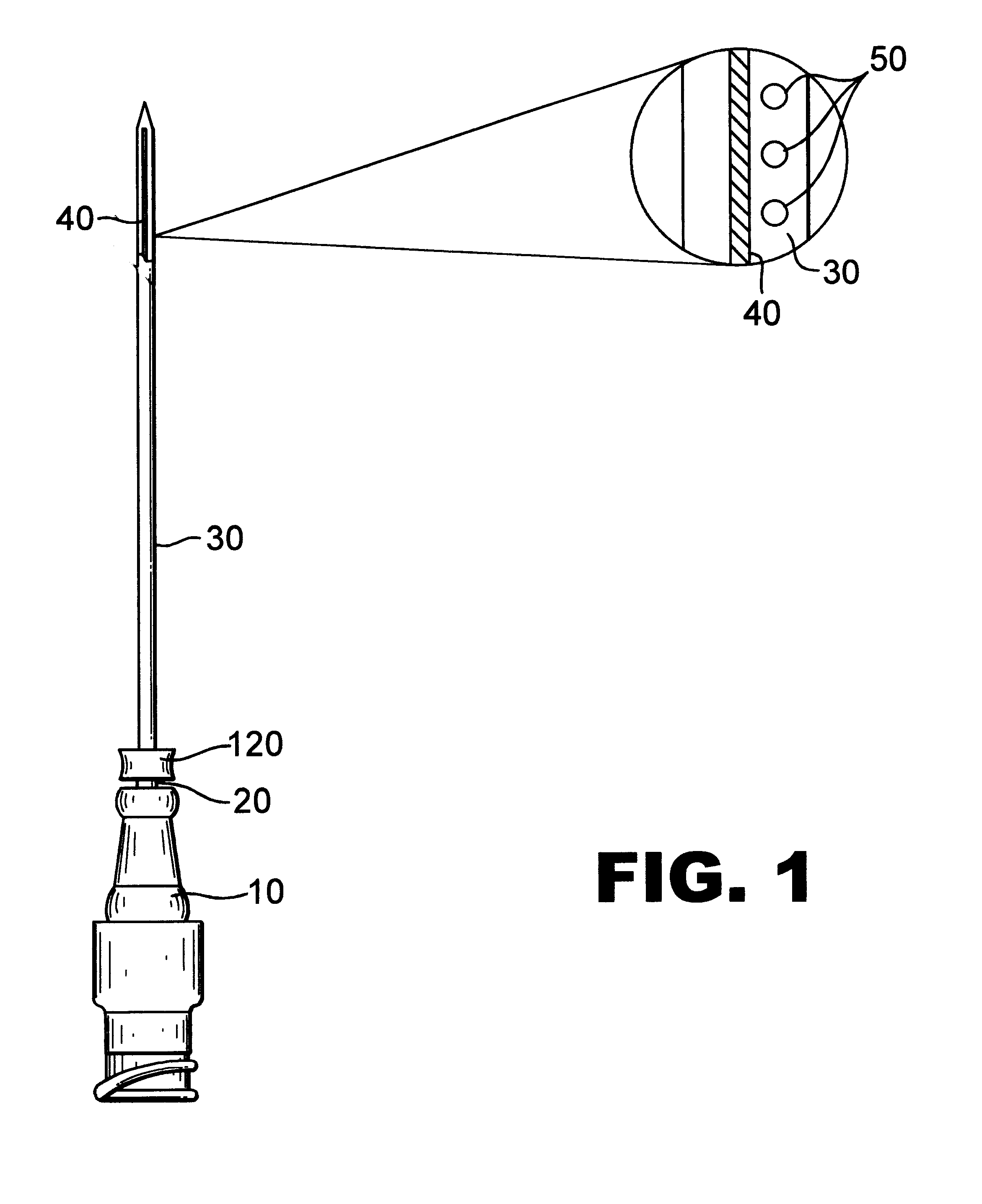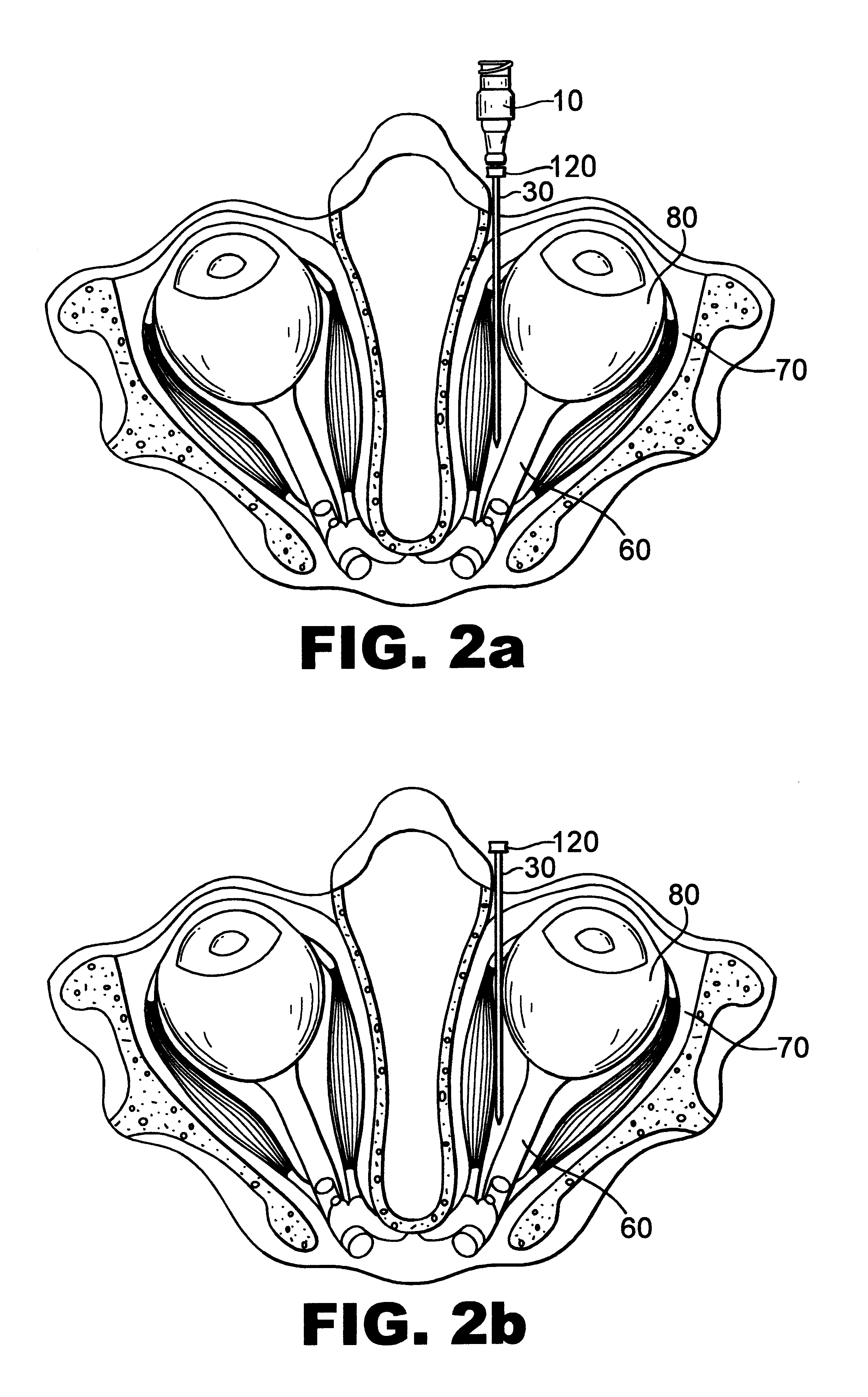Method and apparatus for treatment of amblyopia
a technology for amblyopia and amblyopia, applied in the field of amblyopia apparatus and methods, can solve the problems of inability to develop additional synapses, inability to provide synapses, and abnormal outcomes, and achieve the effects of reducing or suspending impulse transmission, and facilitating catheter entry into the orbi
- Summary
- Abstract
- Description
- Claims
- Application Information
AI Technical Summary
Benefits of technology
Problems solved by technology
Method used
Image
Examples
example 1
5.1 Example 1
Trauma to Dominant Eye
A 33 year-old male has a history of dense (20 / 200) amblyopia in the right eye. He was 20 / 20 in his dominant left eye prior to a motor vehicle accident in which he sustained blunt trauma with extensive choroidal hemorrhage to his left eye. One year following his injury, he has 20 / 200 vision in his amblyopic right eye and 20 / 400 in his previously dominant left eye. The patient wishes to improve vision in his amblyopic right eye to permit reading, allow him to return to work, and possibly allow him to drive. A drug delivery canula is placed through the pars plana of the formerly dominant left eye using a standard trans-pars plana vitrectomy technique. This canula is connected to a small drug delivery pump, which is then implanted beneath the conjunctiva of left eye. A nerve-blocking agent in this case 1% preservative-free lidocaine, is delivered to the eye in sufficient quantity to block transmission of impulses from the dominant left eye to the brain...
example 2
5.2 Example 2
Corneal Scarring in Dominant Eye
A 43 year-old female with a history of amblyopia in her right eye (20 / 100) develops HSV (Herpes Simplex Virus) keratitis in her dominant (20 / 20) left eye. Dense corneal scars result in 20 / 200 vision in her dominant left eye. Multiple corneal transplants are attempted in the patient's dominant eye and fail due to recurrent HSV. The patient is left with 20 / 100 vision in her amblyopic eye and "count fingers" vision in her right eye. Likewise, this patient wishes to improve the vision in her amblyopic eye, preferably to levels compatible with safely driving an automobile. In the operating room, a flexible catheter is positioned in the orbit (socket) of the patient's dominant left eye adjacent to the optic nerve. This catheter is then connected via a segment of tubing to a drug delivery pump that is then sutured to the sclera and implanted beneath the conjunctiva of the eye. The pump delivers a reversible denervating drug, in this case 0.50% b...
example 3
5.3 Example 3
Penetrating Trauma to a Dominant Eye
A 13 year-old male with a history of amblyopia in his left eye (20 / 200 visual acuity) was using a lawn mower when it ejected a stone, which struck and penetrated his dominant right eye (20 / 15 visual acuity). Following surgical repair, he is left with "light perception only" vision in his dominant right eye. The patient desires to improve the vision in his amblyopic eye so as to resume normal activities of daily living, including attending school. As with most patients who sustain severe ocular trauma, this patient requires multiple surgical interventions to save the eye and what little visual acuity remains. During a retinal detachment repair of the traumatized dominant right eye, an intraocular drug delivery insert is implanted in the eye using standard surgical techniques. The insert delivers a reversible denervating agent such as 1% preservative-free lidocaine to the dominant eye, allowing recovery of vision in the amblyopic eye. T...
PUM
 Login to View More
Login to View More Abstract
Description
Claims
Application Information
 Login to View More
Login to View More - Generate Ideas
- Intellectual Property
- Life Sciences
- Materials
- Tech Scout
- Unparalleled Data Quality
- Higher Quality Content
- 60% Fewer Hallucinations
Browse by: Latest US Patents, China's latest patents, Technical Efficacy Thesaurus, Application Domain, Technology Topic, Popular Technical Reports.
© 2025 PatSnap. All rights reserved.Legal|Privacy policy|Modern Slavery Act Transparency Statement|Sitemap|About US| Contact US: help@patsnap.com



